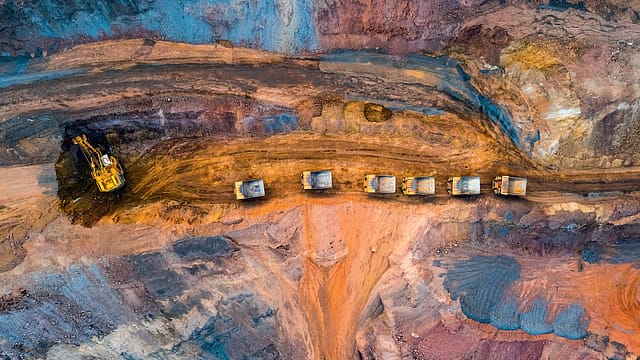China's decision to ease export restrictions on rare earth, fertilisers not long-term solution for India, says think tank
ADVERTISEMENT

New Delhi-based think tank Global Trade Research Initiative (GTRI) has termed China’s easing of restrictions on export of certain goods to India as ‘tactical gesture’ and have stated that India’s real safeguard lies in reducing dependence, strengthening domestic manufacturing, and building resilient supply chains.
“Only then can India deal with Beijing from a position of strength rather than vulnerability”, Ajay Srivastava, founder, GTRI, said.
Srivastava's point was about China’s recent decision to ease export restrictions on fertilizers, rare earths, and tunnel-boring machines to India, which was taken ahead of Chinese Foreign Minister Wang Yi’s visit to New Delhi on August 21–22. Pointing out that India’s trade deficit with China has hit a record $100 billion in FY2025, Srivastava has argued that China now supplies over 70% of India’s needs in several critical areas—including 97.7% of antibiotic erythromycin, 96.8% of silicon wafers, 98.9% of viscose yarn, and 82.7% of solar cells.
“Everyday products like laptops (80.5%) and flat panel displays (86%) are also dominated by Chinese imports. Meanwhile, India’s share in bilateral trade has collapsed to just 11.2% from 42.3% two decades ago, exposing the fragility of supply chains”, he said.
In the pharmaceutical sector, India imported $166.3 million worth of erythromycin from China, accounting for 97.7% of its global imports of that antibiotic. China supplied 88.1% of India’s total antibiotic imports, forming the backbone of India’s pharmaceutical ingredient supply.
December 2025
The annual Fortune 500 India list, the definitive compendium of corporate performance, is out. This year, the cumulative revenue of the Fortune 500 India companies has breached $2 trillion for the first time. Plus, find out which are the Best B-schools in India.
In electronics and semiconductors, India imported $151.6 million worth of silicon wafers from China (96.8% share), and $1.06 billion in flat panel display modules (86%). Computer monitors ($376.5 million) also saw a 66.8% Chinese share. Imports of printed circuit boards ($612.2 million), memory chips ($1.75 billion), and microprocessors ($1.65 billion) were also heavily China-reliant, with shares between 37% and 40.5%.
According to GTRI's analysis, India must move on multiple fronts to reduce this imbalance.
“A reverse-engineering programme using IITs and CSIR labs should deconstruct imported goods and create open-access blueprints, tracked through a “Localise-100” system for the most critical imports. At the same time, a deep-tech push is needed to build integrated domestic ecosystems in chips, PCBs, sensors, and batteries, backed by the new ₹100 billion innovation fund”, Srivastava said.
The think tank is also of the opinion that India should screen Chinese investments in sensitive areas such as telecom, power equipment, fintech, and logistics, while deepening partnerships with Japan, Taiwan, and the EU.
“All of this must be anchored in a long-term self-reliance strategy under the Viksit Bharat 2047 vision, with stable incentives, sustained R&D investment, and talent development”, he added.
